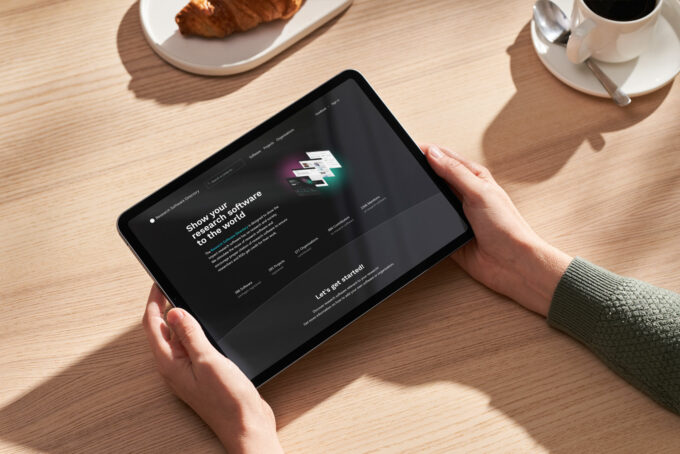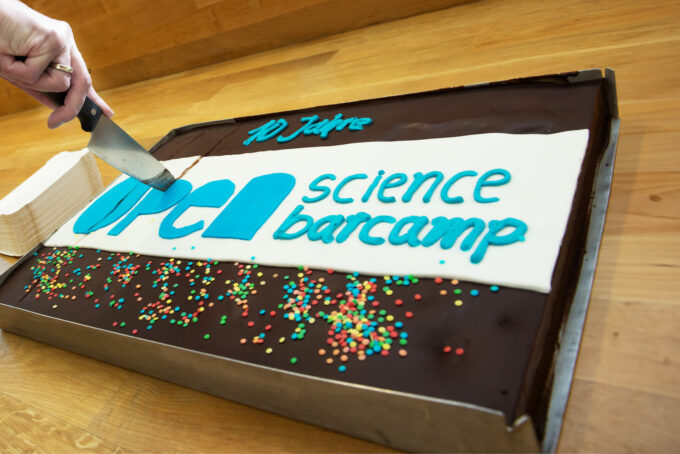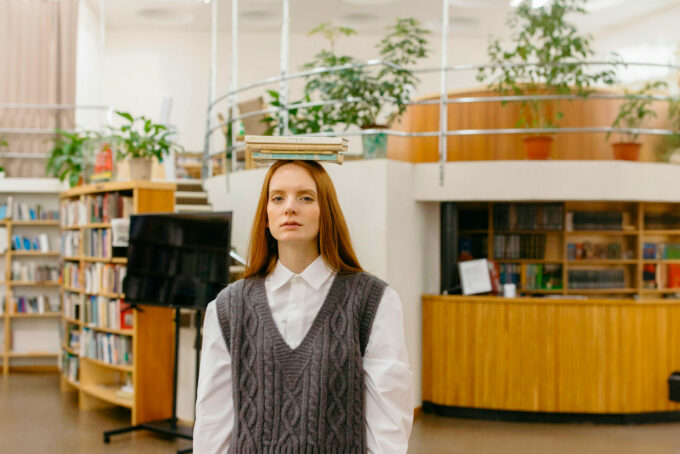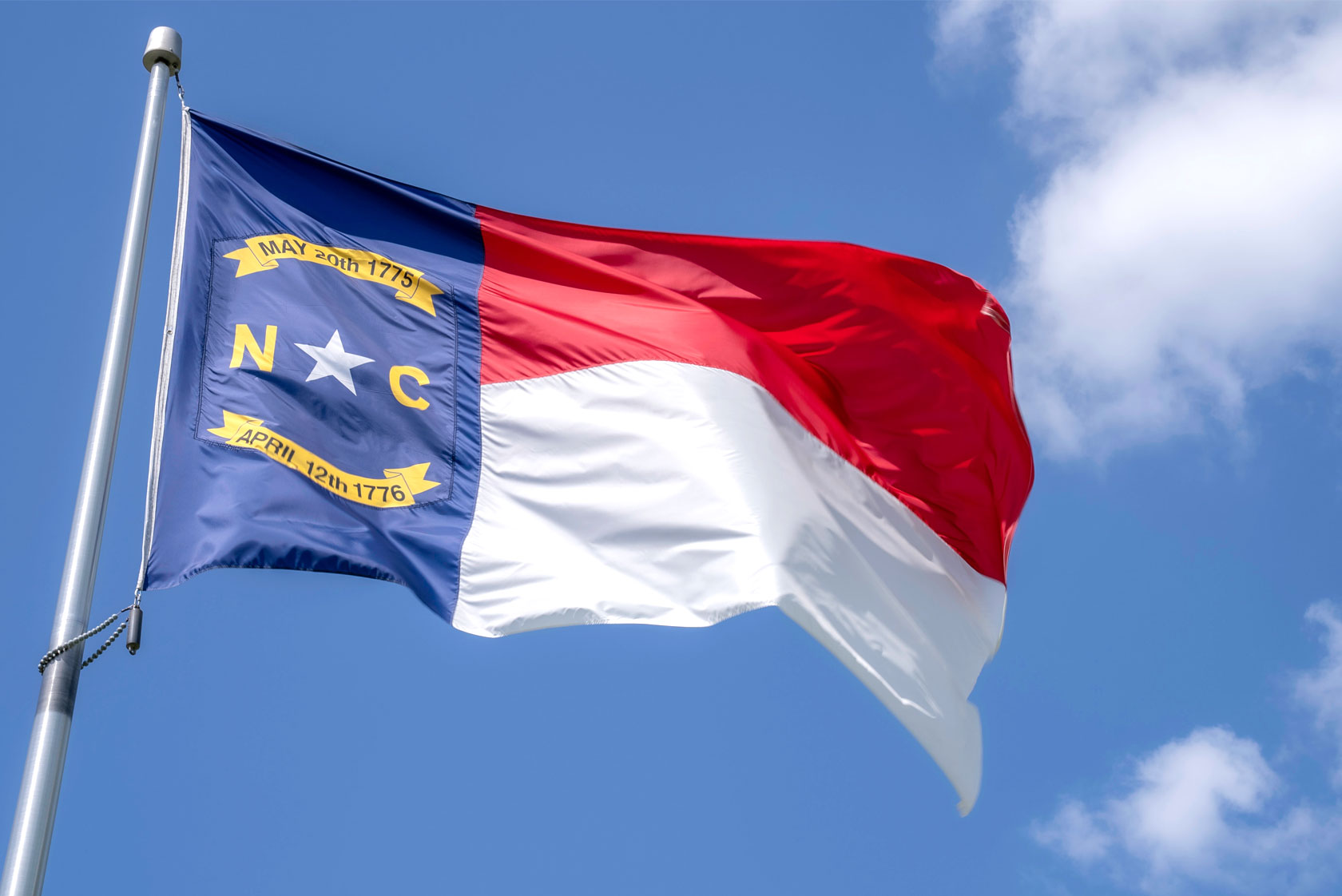
Best Practice: The First Six Month of Open Science at the University of North Carolina Wilmington
“Two new librarians in newly created positions in a new department in a newly designated Carnegie classification level R2 university”: These two new librarians are Lynnee Argabright and Allison Kittinger, who started work at the University of North Carolina Wilmington in August 2021. In the interview, the two take us on their Open Science journey, explain what the challenges and roadblocks were, how they cracked them and why it is so important for modern librarians to beat the publicity drum.
An Interview Lynnee Argabright and Allison Michelle Kittinger, William Madison Randall Bibliothek at the University of North Carolina Wilmington (UNCW)
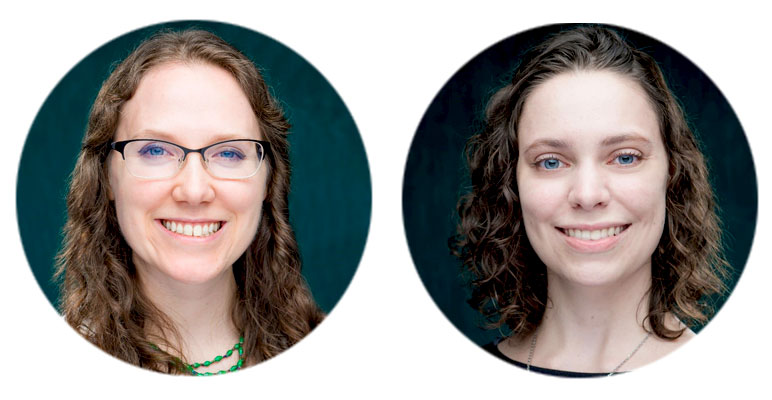
A new central department was created for you with the posts of research data librarian and scholarly communications librarian. How did you go about filling these new roles?
Allison Michelle Kittinger (Scholarly Communications Librarian): As soon as I assumed this position, I became the voice of my institution in scholarly communications spaces. I was our representative for scholarly communications committees within our library and in our university system. This gave me a lot of connections and a kind of support network off the bat that gave me a good picture of what had been happening so far around scholarly communications and Open Science here. Many of my roles, such as managing Open Access and Open Education funding and overseeing the institutional repository were inherited from librarians that began this work on campus when it was not in their job description. Now, I am the point person to continue this work and grow it into a community.
Lynnee Argabright (Research Data Librarian): Lynnee Argabright (Research Data Librarian): I began thinking about this new role by considering the research data lifecycle—data collection, cleaning, analysis, visualisation, sharing …— and looking at academic literature to see what other data librarians have done. A good one was “Academic Libraries and Research Data Services” (PDF) and the follow-up study “Research Data Services in Academic Libraries: Where are We Today?”. It helped me scope out what a data librarian could do, and then I scaled down to thinking what I could do immediately versus in the future. I also thought about my support capacity as a single unit servicing the campus, with potential collaborations with non-data-specific others. I talked with many people on campus about their data needs and about the current data infrastructure and support. Based on that, I am allocating my time on a rollout schedule (see discussion of “maturity models” in “Maturing research data services and the transformation of academic libraries”) to learn about/plan/develop services for particular data lifecycle areas—such as reviewing Data Management Plans and teaching data analysis in R workshops—before I market those specific services to campus. Data discovery was a lifecycle area I could start on right away, joining the subject librarians in their course instruction sessions about finding research results and getting follow-up consultations for finding Open Data.
What are your goals in the new jobs, i.e. for the first year of Open Science at UNCW?
Allison: Awareness, always! Faculty are hungry for the services we offer but not all of them know we are here and doing the work now. My main goal now that much of my role has been established is to raise awareness of the
Lynnee: A big priority for me is to intentionally and transparently fit in Open Science to as many of my data services as possible. Am I teaching about data discovery? I could show Open Data sources. Am I consulting on data privacy? I could bring up how to de-identify data so the data could potentially be shared. Did I get a question about data analysis? I could recommend Open Source tools.
One particular initiative I want to get started in my first year is data sharing. Promoting data sharing on campus would be of value to a campus with newly increased research intensity expectations; not only because researchers new to getting grants now often face the expectation to share their data, but also because sharing data will help showcase UNCW-produced research to the world. However, repository deposit participation does not happen overnight—as another OSC poster explains—so a first year goal to get involved with data sharing has been to get a feel for administering the technical Dataverse infrastructure we have, begin mentioning the benefits of data sharing in other data conversations to fuel awareness, and start looking into how to ease the experience of preparing data to be shared.
I began too excitedly by offering a workshop about data sharing and Dataverse, to generally go over the benefits of sharing data, as well as to demo how to use Dataverse … and only one person showed up, so Allison’s point about awareness is super important.
What were the biggest road blocks so far? How did you manage to overcome them?
Allison: Being new in part, but that is overcome by time and making connections. Sometimes not knowing who to reach out to or collaborate with because we’ve never made those connections before on campus. Everyone is learning together. I think a lack of awareness can be a roadblock, but in general once I’ve explained my role and what I do to people who weren’t aware of me they are very receptive. I credit that to the culture at our institution.
Lynnee: My new department has been asked to go through the subject librarians if they want to reach out to researchers, so a roadblock I’m facing in my new role is getting patrons to know I exist and even to think that the library could be involved in data in the first place. One of the strategies I tried within my first six months was to begin planning campus-wide programming that celebrated international events.
I helped Allison with planning Open Access Week in October 2021, and proposed to co-host a Love Data Week in February 2022 with another campus office partner. Hosting these programmes could simultaneously teach researchers data skills, build a campus community for data activity, and boost awareness that the library is involved with data.
Since then, I’ve gotten more researcher participation in workshops and consultations, and other research staff are reaching out to collaborate. I recognise running campus-wide programming takes a lot of work up front to plan and it may not take off at first, but it did help me get recognised, and it will slowly build up the library’s brand in the data sphere. Here are my reflections about making event planning sustainable.
The job profiles of modern librarians have diversified greatly in recent years. However, many people still have the image of the old lady with a bun putting dusty books on shelves in their minds when they think of libraries. Where do you think this perception gap comes from?
Allison: The public perception of librarians I would guess comes from media stereotypes about public libraries. I’d think academic libraries are not the first type of library people think about when they think of libraries. Especially in roles like ours, they can be removed from students and the public and focused more on faculty and research activity. Open Science shows a path for us to engage with all these populations and stay research-focused at the same time. Our institution is known for student and community engagement, so I always have an eye towards the research happening in those spaces too. Visibility is the key to closing existing perception gaps.
Lynnee: This is a classic case of “You do not know what you do not know”; if nothing intervenes in an individual’s interactions with the library, the use of the library as a quiet place for books will remain. How do we change this perception? Library spaces that remove the books in exchange for group work areas, that provide classroom and exhibit and maker spaces, and that allow food can begin to change what the physical library means. Librarians embedding into classes to cover more than journal subscriptions and participating in campus committees can begin to change what library representation means.
Whenever I hear “the library can help with that?” (which I hear frequently in this new research role), I consider it a huge win. Yes, we are getting involved in active research engagement and collaborations. Yes, we are moving the needle on infrastructure that supports Open Science. Each small thing we do in our answers to everyday consultations or in flyers around the campus can be a perception shift away from “Bun Lady.”
Why is it so important for modern library staff to do marketing and public relations for their services?
Allison: I’ve seen direct marketing work firsthand. Our library dean sends out personal congratulatory emails to researchers when they publish an article, and includes a sentence about depositing their work in the institutional repository with me copied. Faculty love this recognition, and they are happy to use the repository when they are made aware of it. In addition, press releases have worked really well for Open Access and Open Publishing initiatives. We published a press release about a faculty member publishing our first open textbook with the library in partnership with UNC Press, and now we have more faculty interested in publishing their work in the same way.
Lynnee: Marketing highlights what services the library offers and is especially important when participating in new areas of research support. Since the library had not really provided data support previously, I started by developing partnerships with the other research support offices, such as the grants office, the Institutional Review Board office, the graduate school administrators, the faculty support office, and Campus IT.
These offices may have overlaps in data services, or may be contact points that researchers are coming to for help, and if these offices know about me, they can direct patrons with data needs to come to me. For example, I was preparing for a Data Management Plan workshop and told our grants office about it, since the deadline for their internal funding opportunities was approaching. They sent out the workshop news in their email listserv. Based on the timing of their email and of people’s registrations, this marketing was the cause of most of my attendees—none of whom had previously met me.
How can you build up a sustainable Open Science campus in times of temporary employment?
Allison: Not just positions; funding can be temporary, organisational structures can be temporary. My definition of sustainability is the work can be picked up if someone leaves off, and it has a continued commitment for support on a broader level. For example, our APC fund in the library was not funded next year. Only the library was funding it, and in the reorganisation we’ve had recently our funds are spread more thinly across more departments. Where I see us going is more diamond Open Access publishing and more institutional read-and-publish deals that cover these costs for faculty. And that shows that a lack of sustainability can be an opportunity to move closer to our true values as well. Sustainability should also be a path to growth.
Lynnee: I think this is where promoting data management practices can be particularly helpful for Open Science. Documentation of processes during data collection and data processing can greatly help a lab as students cycle in and out. Compiling documentation files can then be easier to share in a repository when the research project is completed. I can encourage the use of Open Source collaborative software, such as Open Science Framework and e-lab notebooks, which can show transparency of a team’s process through version logs, editing logs, and data file permissions. Influencing researchers to pick up use of these tools or practices and become familiar with them in their workflows can make Open Science a practical, efficient, and collaborative way to do research.
What are the lessons you have learned in the first six months of Open Science?
Allison: That sustainability also can’t exist without collaboration. That’s true in Open Science initiatives and in roles supporting them. It takes a team like our department and buy-in from the library and other campus entities to grow these programmes. If you’re the “one person” in charge of all of these things, and you can only use your own resources and nobody else’s, it can feel like you’re alone in the work, and it would all crumble if you leave. But I haven’t felt that way, and for anyone looking to establish Open Science roles, it is crucial that nobody feels so.
Lynnee: I discovered I do not have to be a perfect expert in all areas of my job—often, what I know is already far more than what my patrons know, and if I am unsure about a question, I can explore with the patron for answers. Another lesson I picked up by learning the culture of my university is to think about Open Science in terms of my university’s and patrons’ needs. Our institution recently went from an R3 to an R2 Carnegie classification, which means the campus has a larger emphasis on research than before; thus, more of my patrons may need help with research-related skills — for example, how to write data management plans (DMPs) for grant applications. While reviewing DMPs, I can work in Open Science by asking them how they plan to share their data afterwards, which gets into what data repositories are reliable and how to be responsible about sharing sensitive data.
This might also be interesting for you:
- Poster at Zenodo
- Open Science Conference 2022: New Challenges at the Global Level
- Research Data Management Project bw2FDM: Best Practice for Consultations and Training Seminars
- Horror Research Data Management: 4 Best Practice Examples for Successful Gamifications
- User Experience in Libraries: 4 Best Practice Examples from the ZBW
- Open Science: Grassroots Initiative from Students for Students at the University of Amsterdam
We were talking to:
Allison Michelle Kittinger is the scholarly communications librarian at UNC Wilmington. She manages all things concerning Open Publishing, including an Open Education fund, Open Access initiatives, Open Journal support, and the campus institutional repository. She can also be found on ORCID.
Portrait: UNCW©, photographer: Jeff Janowski
Lynnee Marie Argabright is the research data librarian at UNC Wilmington. She provides guidance about collecting, using, managing, and sharing data in research, through instructional workshops or individual consultations. Lynnee has previous work experience in areas such as Open Access outreach, bibliometric network analysis visualisation, finding economic data, and higher education textbook and monograph publishing. She can also be found on Twitter and ORCID.
Portrait: UNCW©, photographer: Jeff Janowski
View Comments
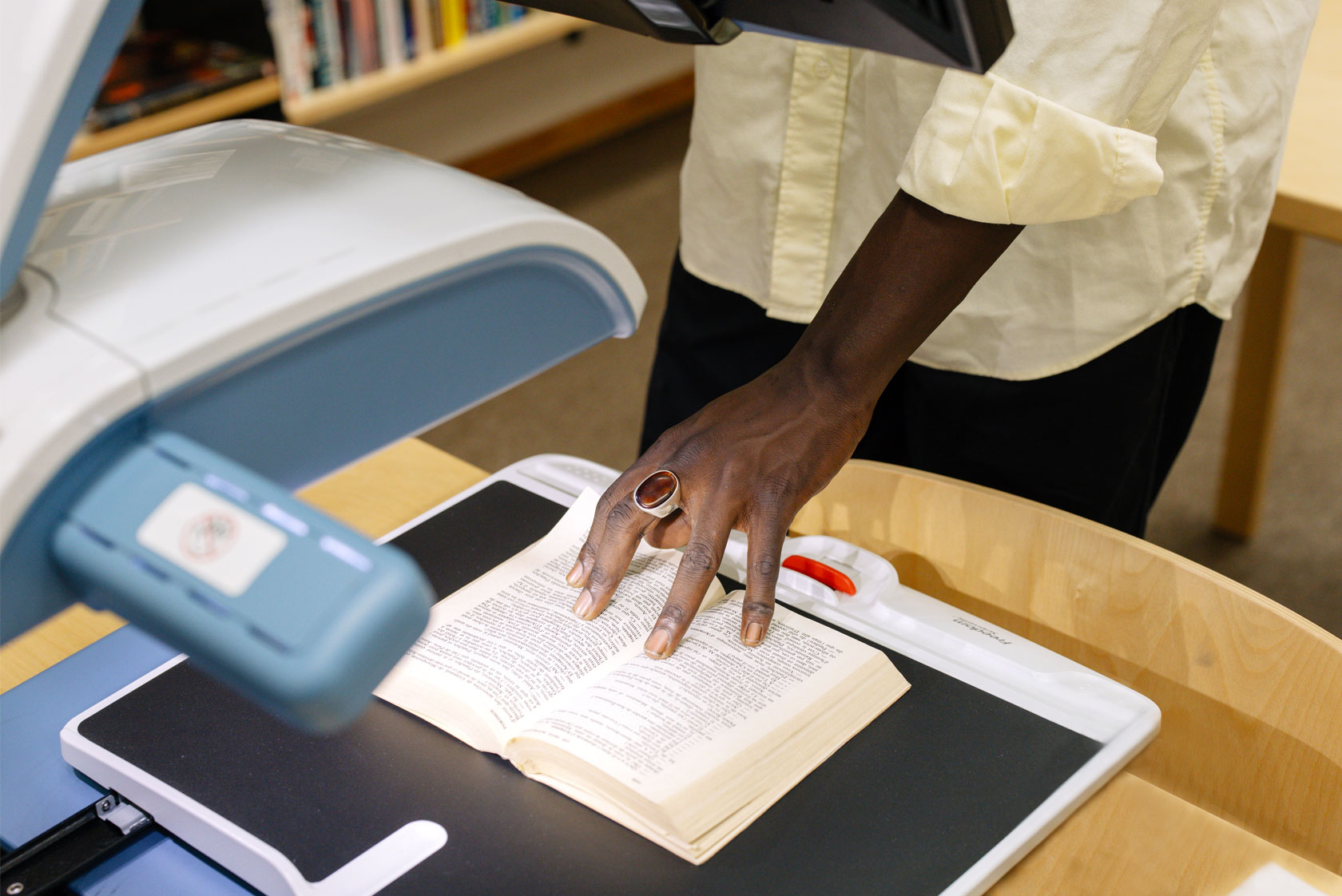
Workshop Retrodigitisation 2022: Do It Yourself or Have It Done?
At the workshop, digitisation projects in cooperation with volunteers, with service...

